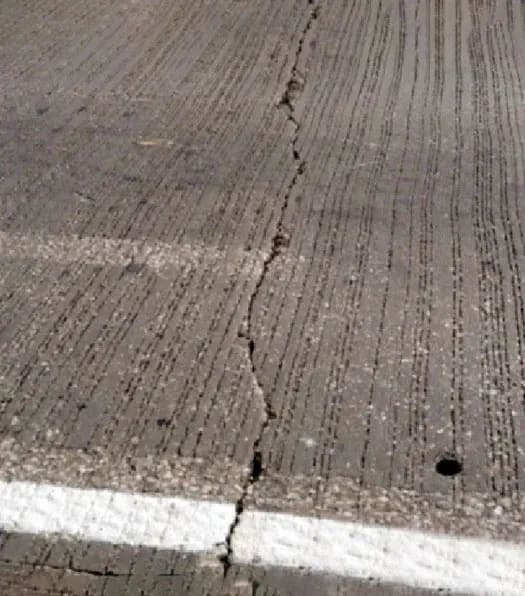Concrete Highway Panels Stabilized and Lifted in Ohio
Problem
The Ohio Department of Transportation (ODOT) District 4 had experienced unstable road panels for over a year on a section of highway I-80. This particularly busy and failing section of panels began to settle even more during winter months. ODOT attempted to mudjack them using cementitious grout but achieved only limited and temporary improvement. As water entered the pavement system and mixed with the pulverized grout, the constant pounding of traffic pumped the slurry mix out of the control joints and strained the concrete pavement, resulting in premature slab cracking and up to four inches of renewed settlement. This settlement forced lane closures due to safety concerns.
Analysis
The section of interstate to be repaired consisted of 14-inch concrete panels, a four-inch drainable base, six inches of 304 stone, and 20 inches of compacted bedrock sub-base sitting atop solid bedrock. ODOT was familiar with URETEK from contact at the Transportation Research Board (TRB) convention. After conversations between URETEK and ODOT central office engineers, ODOT determined that the URETEK Deep Injection® (UDI) process was the most viable solution for the project. URETEK used soil testing to ascertain sub-base strengths. Because the lanes had already been closed when URETEK was brought on the scene, a top priority was reopening the roadway to resume normal traffic patterns as soon as possible.
Solution
URETEK used UDI to inject structural polyurethane into the pavement system to strengthen and raise the concrete panels back to grade. ODOT technicians performed pre-injection and post-injection Falling Weight Deflectometer (FWD) testing to evaluate the improvement in pavement stiffness following the repairs by URETEK.
Result
URETEK was able to raise eight panels, stabilize the sub-base, limit material infiltration into the drainable base, and significantly extend the service life of the roadway. Qualitative FWD analysis revealed an average 388% improvement in pavement stiffness (minimum=42%, maximum=1368%). URETEK provided a fast and reliable solution to Ohio’s I-80 settlement problem. This project was completed in only two days, and regular traffic resumed within minutes of repair completion. Additionally, URETEK provided a two-year unconditional warranty against settlement for their work.
URETEK Deep Injection® (UDI)
Widely referenced throughout our industry, UDI involves the injection of structural polymer into base and subgrade soils to increase the load bearing capacity. This is achieved by injecting the polymer through small holes drilled directly through the pavement structure to depths determined by site-specific analysis. Our URETEK 486 Star® material flows easily into voids and weak zones within the soil mass below. Through a controlled chemical reaction, the expanding polymer compacts surrounding soils and applies a controlled pressure on targeted areas of the affected pavement above. If needed, a multi-injection design plan is utilized to gently return the pavement to its original grade. The composite material quickly cures into a strong, dimensionally stable, and water-resistant geo-material, providing years of reliable service.
URETEK 486 Star®
URETEK 486 Star® polymer is a two-component, high-density, expanding thermoset polyurethane system. It was developed to be the ideal solution for under-sealing, void filling, lifting of settled pavement, stabilization and stiffening of weak soils, and for encapsulating and sealing buried infrastructure. URETEK 486 Star® is environmentally inert, non-toxic, and resists underground water erosion or weakening due to its industry-leading hydrophobic properties.


